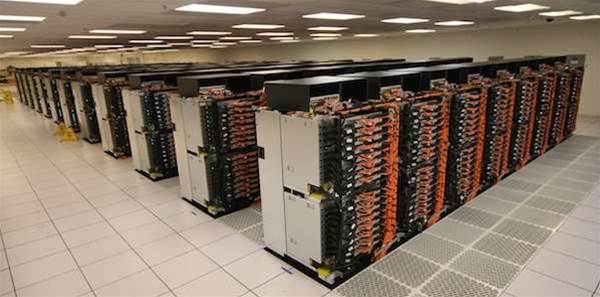IBM's US-based Sequoia supercomputer has been crowned the world's new number-crunching champion, according to the latest supercomputer rankings.

The supercomputer, situated at the Lawrence Livermore National Laboratory in California, will be capable of reaching 16.32 petaflops once complete; relegating to second place Fujitsu's Kei Computer in Japan, which can perform at 10.51 petaflops.
The Sequoia computer will primarily be used to simulate atomic bomb tests, particularly for older weapons the US Government would otherwise have to detonate in the ground.
Sequoia replaces the Blue Gene/L and ASC Purple supercomputers at Lawrence Livermore and, when complete, will have 98,304 compute nodes with 1.6 million Power Architecture processor cores and 1.6 petabytes of memory.
The supercomputer will be housed in 96 racks that cover 280 square metres, and have a power draw of six megawatts.
The twice-yearly update to the list of the world's 500 fastest computers saw computing power increase globally overall, with the top 20 computers all capable of reaching at least one petaflops for the first time.
Combined, the top 500 supercomputers are capable of 123.4 petaflops computing power, versus 74.2 petaflops from November 2011 rankings.
The increase in power, however, means that the Australian National University's planned 1.2 petaflops supercomputer would be placed 14th based on current rankings, rather than fifth as previously imagined. The $100 million is due to launch in January next year.
The US remains the leader in the supercomputer rankings, with a total 253 systems in the top 500, down from 263. Europe made a stronger showing with 107 in the rankings – up from 103 – but Asia’s share of supercomputers grew more quickly, with 122 making the grade as opposed to 118 on the previous list.
Most of Asia’s supercomputers are in China.
Analyst firm IDC forecast a 7.1 percent expansion in the supercomputing market in 2012, over last year’s record-breaking $US11.3 billion vendor revenues.
IBM remains the top supercomputer vendor on the TOP500 list with 213 systems, while HP came in second place with 138 systems. Almost three-quarters of supercomputers in the TOP500 list use Intel processors.


_(22).jpg&h=140&w=231&c=1&s=0)






_(26).jpg&w=100&c=1&s=0)

 iTnews Executive Retreat - Security Leaders Edition
iTnews Executive Retreat - Security Leaders Edition










_(1).jpg&h=140&w=231&c=1&s=0)



